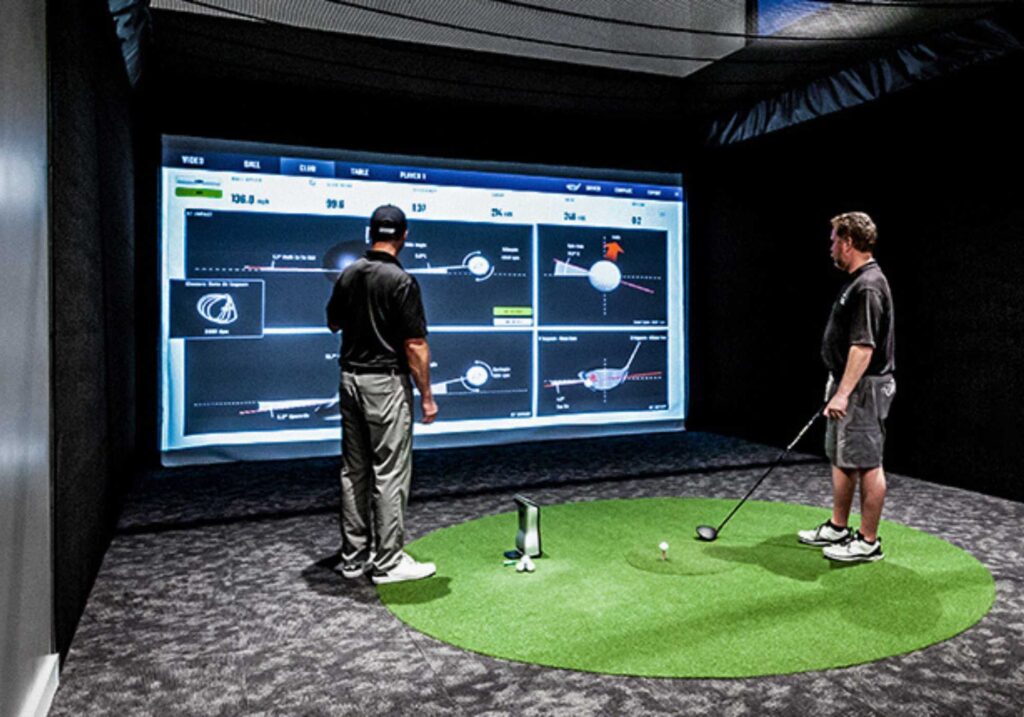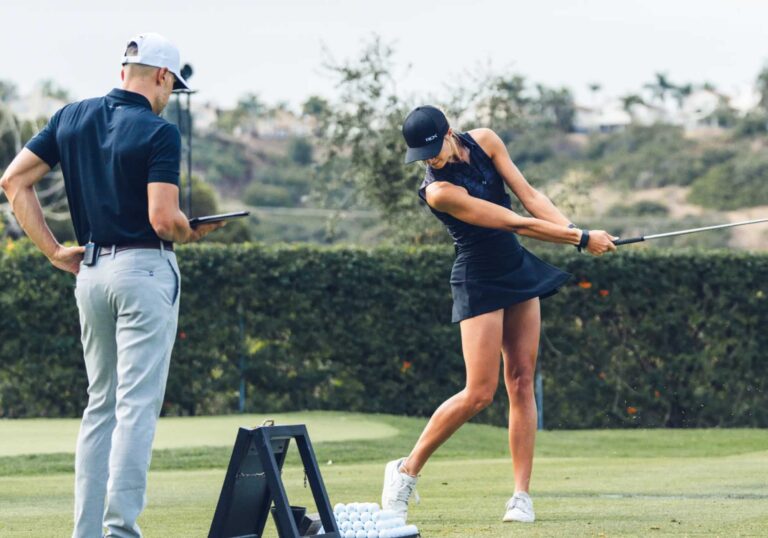If you’re a newer golfer, you’ve probably heard two pieces of advice:
“Take lessons to fix that swing.”
“You need to get fit for clubs that suit you.”
Both are good advice on their own, but the real question is – which should come first?
This question comes up in every golf shop, fitting studio, and clubhouse conversation. It can feel overwhelming, especially when you’re trying to spend wisely and improve efficiently. Let’s break it down in clear, honest terms so you can make the choice that best suits your goals, budget, and enjoyment of the game.
Why You Might Choose Lessons First

Building a Repeatable Swing Matters
Imagine getting fit for clubs based on your current swing, but that swing changes dramatically after five lessons. Suddenly, the lie angles, shaft flex and even club type you were fit into might no longer suit your updated technique.
Lessons help you build the foundations of a better golf swing. Grip, posture, setup and basic swing motion are the fundamentals every good shot is built on. If your fundamentals are solid, a future fitting will dial in the equipment to maximize your performance – rather than compensate for flaws.
Lessons Fix Root Problems
Let’s say you’re slicing the ball badly. Sure, a new driver with a draw bias might help reduce the slice, but it won’t fix the underlying swing path issues causing that slice in the first place. Lessons address technique, alignment, and impact to fix problems at their source.
When your swing improves, your ball striking improves. Even with your existing clubs, lessons can lead to immediate lower scores and higher confidence.
Cost-Effective Improvement
For many newer golfers, spending $200-$500 on a series of lessons will make a bigger immediate difference than a $1,000+ new set of clubs. You’re investing in yourself and that knowledge never goes obsolete. Technique improvements translate across any equipment you use.
Less Equipment Overwhelm
Walking into a golf shop as a beginner can feel like entering a foreign world. Shaft flex, lie angles, clubhead designs – it’s a lot to process. Starting with lessons builds a clearer understanding of your swing, which makes later fitting sessions far more meaningful and less intimidating.
Why You Might Choose a Fitting First

Badly Fit Clubs Can Hold You Back
If your clubs are too short, too long, too stiff, or have grips that don’t fit your hands, it’s like learning to drive in a car with broken mirrors and sticky pedals. You’re compensating before you even start swinging.
For example, if your clubs are too upright, you may start adjusting your swing to avoid hooking the ball. If they’re too flat, you might start standing up through impact. These compensations can create bad habits that are harder to fix later.
Confidence Boost
Using clubs that feel comfortable, fit your posture, and match your swing speed can build confidence and make lessons more productive. You’ll know the problem isn’t the club, so you can focus entirely on your technique.
For many golfers, having properly fitted clubs makes the game feel easier, leading to better practice sessions and more enjoyment on the course.
Beginner Fittings Are More Accessible Now
Many fitters offer beginner or basic fittings focused on length, lie angle, and grip size rather than expensive, detailed tour-level fittings. Even these basic adjustments can have a huge impact on your setup comfort and ability to make solid contact.
Fittings have become less intimidating in recent years, with many fitters welcoming beginners and focusing on what helps you play better – not just selling the latest gear.
So… Lessons or Fitting First?
Here’s a practical way to think about it:
If you’re brand new to golf, start with a lesson or two. Learn the basics of grip, stance, posture and swing motion. Borrow clubs, use rentals, or buy a second-hand starter set just to get going. At this stage, your swing is changing rapidly, so an advanced fitting would be premature.
If you’re committed to playing regularly, consider a basic fitting early on. Even just checking your clubs’ length, lie angle, and grip size with a fitter or pro can prevent bad habits caused by clubs that don’t suit your height, strength, or swing tendencies.
If you’ve been playing for a while with no lessons or fitting, ask yourself this:
Do I struggle more with technique (contact, direction, consistency), or do I often feel uncomfortable with my clubs (too heavy, too long, hard to launch)?
If technique is your main struggle, prioritize lessons. If your clubs feel awkward and you find yourself working hard just to set up properly, a fitting might unlock hidden potential quickly.
A Balanced Approach

Here’s what many teaching professionals and fitters recommend:
- Start with a couple of lessons. Learn solid fundamentals and build a repeatable swing, even if imperfect.
- Get a basic fitting. Make sure your clubs’ length, lie angle, shaft flex, and grip size aren’t working against you. Even a simple fitting with your current clubs can lead to grip adjustments or lie angle changes that improve your ball striking.
- Continue lessons as you go. Golf is a game of lifelong learning. As your swing develops, fittings become more impactful for dialing in launch, spin, and ball flight preferences.
- Revisit fitting when your swing stabilizes. Once you have a consistent motion, you can fine-tune your equipment for optimal performance – shaft profiles, loft adjustments, and specific club models that match your game.
Final Thoughts: Your Golf Journey Is Personal
There is no single right answer because every golfer’s path is different. What matters most is getting the help that makes you enjoy the game more.
If you love the idea of hitting straighter, more solid shots right away, lessons might be your best starting point. If your clubs feel awkward and uncomfortable and you can’t set up properly, a fitting could be the first unlock you need.
Golf is supposed to be fun. Whether it’s lessons, fitting, or both, invest in what will keep you playing with a smile.
What did you choose when you started? Lessons, fitting, or a mix of both? Share your experience below – your story might just help guide another golfer starting their journey today.
